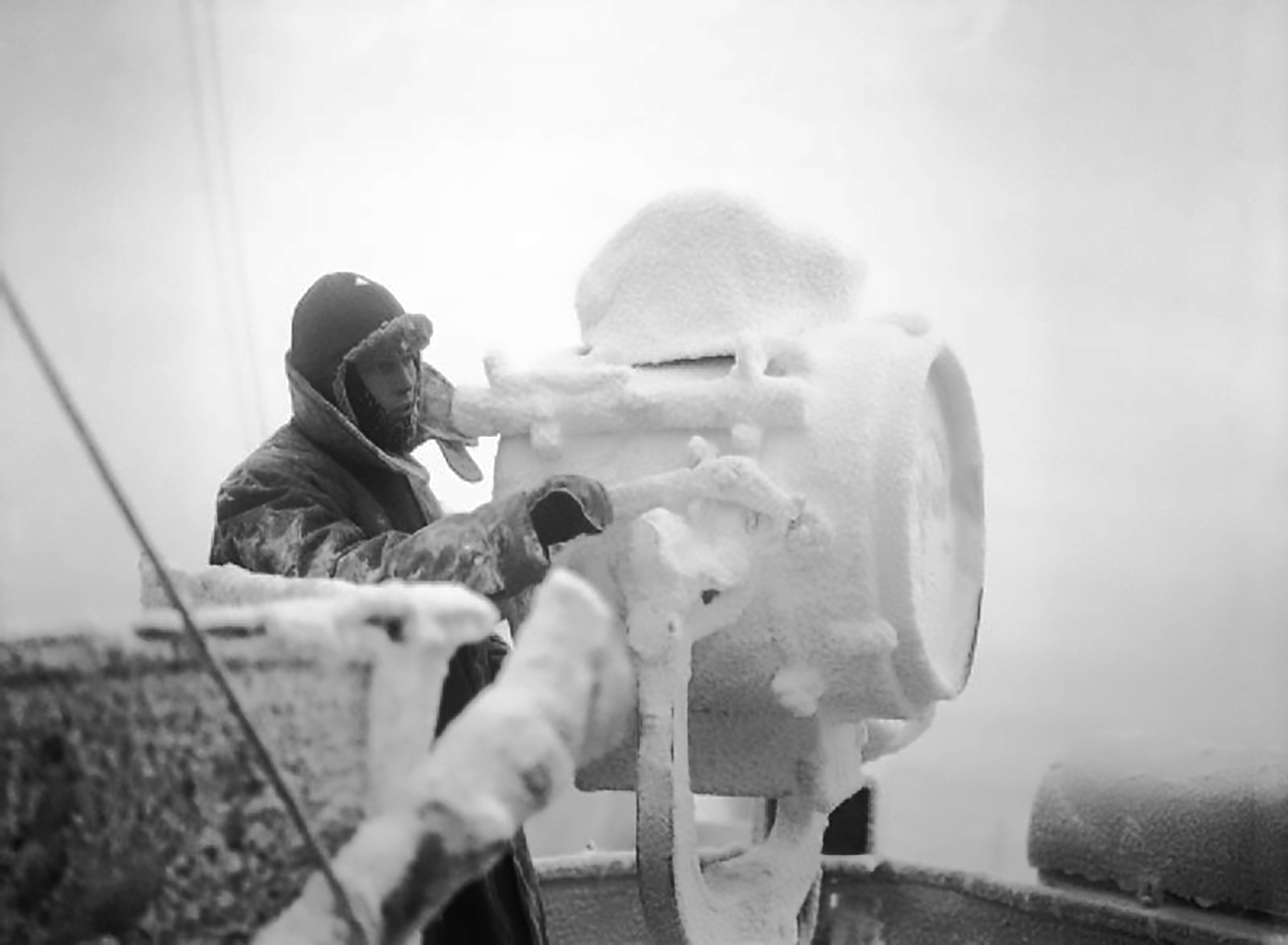
Ice forms on a 20-inch signal projector on the cruiser HMS Sheffield while she is helping to escort an Arctic convoy to Russia.
Coote, R G G (Lt), Royal Navy official photographerA Museum of the history of the Arctic Convoys 1941-1945 is to be opened at St. Petersburg's Admiral Makarov State University of the Maritime and Inland Shipping. The foundation ceremony took place on March 1 and the opening is planned for August 2018.
It is believed it will be the largest and most complete exhibition in the world dedicated to the history of the Arctic convoys. In the words of its founders, the museum's mission is "to serve as a token of respect and acknowledgment to war veterans, to promote peace between all countries, as well as to nurture patriotism in youth by referring to the heroic pages of history."
Three years ago the university unveiled a monument honoring the bravery of Arctic convoy seamen. The Krasin icebreaker, which participated in the events, will celebrate its 100th anniversary on March 31, 2017. A model of the icebreaker will be displayed in the museum.
The idea to set up the museum is a joint initiative between the university, the "Polar Convoy" St. Petersburg Regional Public Organization and the Brig Company.Britain and America sent Arctic convoys to the Soviet Union during the war years, keeping a vital supply route open to the major northern ports of Arkhangelsk and Murmansk. The convoys brought essential assistance to the Soviet war effort and saved the lives of many Soviet sailors.
In August 2016, Britain's Princess Anne visited Arkhangelsk for celebrations marking the 75th anniversary of the arrival of the first convoy in August 1941, known as Operation Dervish.
If using any of Russia Beyond's content, partly or in full, always provide an active hyperlink to the original material.
Subscribe
to our newsletter!
Get the week's best stories straight to your inbox